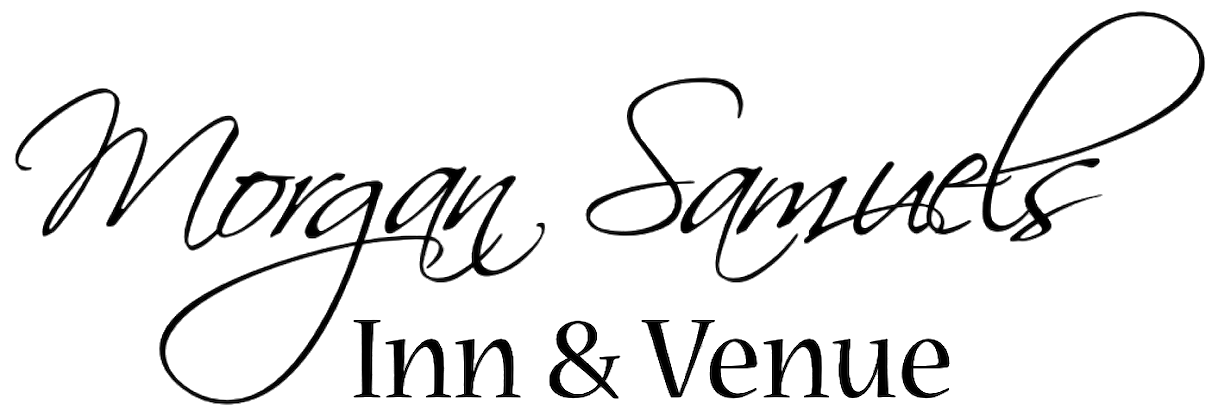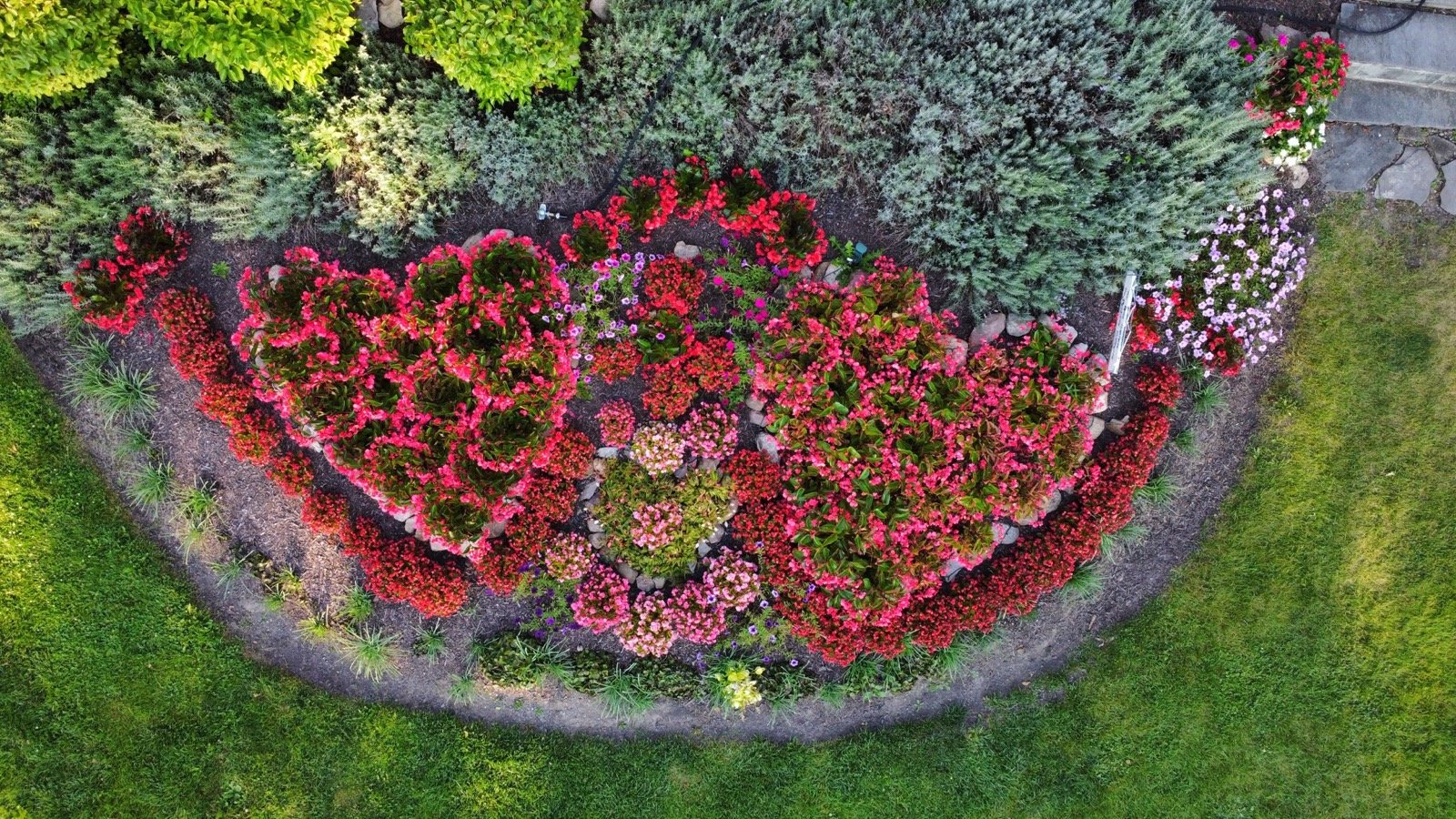The first recorded sale of this property was October 6, 1794, when Nathaniel Gorham, Jr. sold the property to the Barlow Brothers for 30 pounds. The property was used as farmland. In the early 1800's Robert Davison purchased the property for $685 and it is believed he built the first house around 1810 using the fieldstone from the property. The property would be owned by two other Davison's till the property sold in 1852 to Jefferson J Whitney for $7500. Whitney sold the property exactly one year later to Reuben J Sutherland. Reuben owned the property for 30 years and raised his family there. He deeded it to his daughter Alice A Palmer.
Reuben J Sutherland was the grandfather of Verna Sutherland Hollis (1872-1952), who was married to Fred Hollis, the Ontario County Commissioner of Public Welfare. In 1931, Verna Sutherland Hollis wrote an essay (see below) included with her application for membership to The Daughters of the American Revolution. She wrote of the history of her family, including her recollections of the stone house and the rockery and gardens. Alice A. Palmer died March 18th, 1933, her two sons Leon H. and Earl D. inherited the property. They sold the property to James Judson Morgan on April 11th, 1940.
James Judson Morgan, a local stage actor, born in Montreal and related to the famous " Canadian Morgan's" purchased the property for his thriving cattle operation. He transformed the home in the early 1940's to a significant "Colonial Revival" style home detailing the spirit of Williamsburg. The very large and extensive renovation for this period in time at the close of the depression and the start of WWII could have only been done by someone of great wealth.
The house was later purchased by industrialist, civil rights activist and philanthropist Howard Samuels, who with his brother Richard established Kordite Corp in 1946 and invented plastic wrap, wax paper, disposable kitchenware and a sturdy trash bag that became the Hefty brand. Howard later was undersecretary of Commerce and Chief of the Small Business Administration under President Lyndon B Johnson, special advisor to the campaign for president John F. Kennedy and the administration of President Carter. He ran three unsuccessful bids for Governor of New York State. The Samuels' raised their eight children at their home in Hopewell till they sold the house to Gary Haynes in December of 1975. The local newspaper, The Daily Messenger did a story on November 21, 1975, about a different kind of "yard sale". The Samuels had a household yard sale and sold everything that remained. Many showed up just to see the house.
In 1988 Julie Sullivan bought the place and turned it into a Bed & Breakfast. John would prepare mouth watering gourmet meals for their guests Julie and John owned the Bed & Breakfast for almost 30 years and had quite a following.
The year 2020 brought our new ownership and a new plan for this beautiful property. The property can now be enjoyed as an event venue for wedding ceremonies, receptions, rehearsal dinners, celebration of life, bachelorette party, reunions or business meetings, retreats or holiday parties. The whole mansion and breathtaking garden estate is yours to share life’s most Important Celebrations with those special friends & family!
We hope you will choose The Morgan Samuels Inn & Venue, for your Special Event and Gathering...
Cheers!
Liza Barnum
History of Morgan Samuels Inn & Venue
ESSAY
Written in 1931
by
Verna Sutherland Hollis
"The old stone house stands today in a fair state of preservation, although it has not been occupied by any of the family for ten or more years. Grandfather bought this place 79 years ago (1852) from a man named Davison who had recently built it for himself and maiden sister. It stands in the center of a 160-acre plot, is built of stone salvaged from the farm, it is approached by long lanes. In my youth these lanes were bordered by maple and cherry trees. The house was also surrounded with trees, tall pines, maples, birch, and the beautifully berried Mountain Ash. The house is a large nearly square affair, with gables on all four sides, and a wide overhanging cornice. It faces the East and across the front are balconies reached by French doors from the first and second stories. At the north is the front portal with its heavy iron knocker, approached by stone steps, at the south with a grade entrance into the dining room, kitchen, and milk cellars, at the rear the long lattice porch which sheltered the well. At the front and to the south were the flower gardens, the rockery over which the wandering Jew and the Ivy trailed and the Johnny Jump-ups bloomed at the edge. A little farther on was a life sized statue of George Washington, which received a fresh coat of paint every Spring as regularly as the soil was turned for the new crops. The purple and the white Lilacs, the tall Hollyhocks and beyond the Mock Orange hedge, which sent out its fragrance in the Spring. At the South grew the cinnamon and white Buttoned roses and the yellow ones which were earliest of all, and the more valuable pink roses and the white Moss. Early in the year the Iris and Scarlet Tulips sent up their green leaves and Sweet William and Lemon Lilies grew rich and green. There were many other flowers, but these stand out best in my memory. Then beyond the flowers came the little orchard where Grandfather kept his Honey Bees, they were his delight and recreation, but my terror. I was always getting one in my hair, trying to gather an apple or peach, when I was strung, as I frequently was, Grandfather would scold me for coming so near then take me to the watering troth, mix up mud and put it on the hurt. Near the house grew a large Ox-Heart Cherry tree under which was an old mill stone.
Often Grandmother would sit here and hull Strawberries or stem currants for her famous Jelly. Not far away was the windmill over the Spring which forced water to the great tub in the barnyard, it was the delight of the neighbor boys to come in the early evening and climb the long iron ladder to the top. In those days, this was like a trip to the Woolworth Tower. Beyond the mill on either side of the lane and reaching the Highway were 20 acre fields. I can see Grandfather now riding on the old reaper drawn by willing horses, and ever so many men bending over the sheaves of wheat, binding it into bundles. He was a great farmer and like his forefathers loved the soil and took great pride in making it produce. He owned the first self binder in the community, it bound the grain with wire. He owned a small threshing machine and a saw for cutting wood, these he operated by horse-power. His own blacksmith shop where on rainy days he with his men would repair machinery or shoe the horses. I used to like to watch the shoes turn from red to black as he cooled them in the tub of water. There was always a row of shoes around the tub, and the largest ones I knew belonged to old Jim because he was the biggest horse Grandfather had.
Grandfather found time to make a fine vegetable garden, with strawberries and asparagus beds, red and black currants, melons, grapes and blackberries “on the long trailing vines.” All kinds of vegetables in season. There were comfortable barns for the stock, two orchards, plenty of standing timber, flocks of sheep and Durham cattle in the meadows, mares and colts who idled under the shade trees in the dreamy summer days the place teemed with life and industry.
Grandmother had her Phaeton and old black Caeser, we used to drive into town, taking the sugar box to be filled, it was a tub like wooden affair, with a tight cover and wooden bail and held 50#. Caesar would idle into town, but when coming home as we neared the lane Grandmother would say “Now, hang on” and away would go Caeser like mad, boom over the little bridge and bring us up nearly standing near the big barns. It was a naughty trick and we could never break him of it."
They continued to occupy this farm until about 1880. Later it was deeded to their daughter Alice Palmer.


